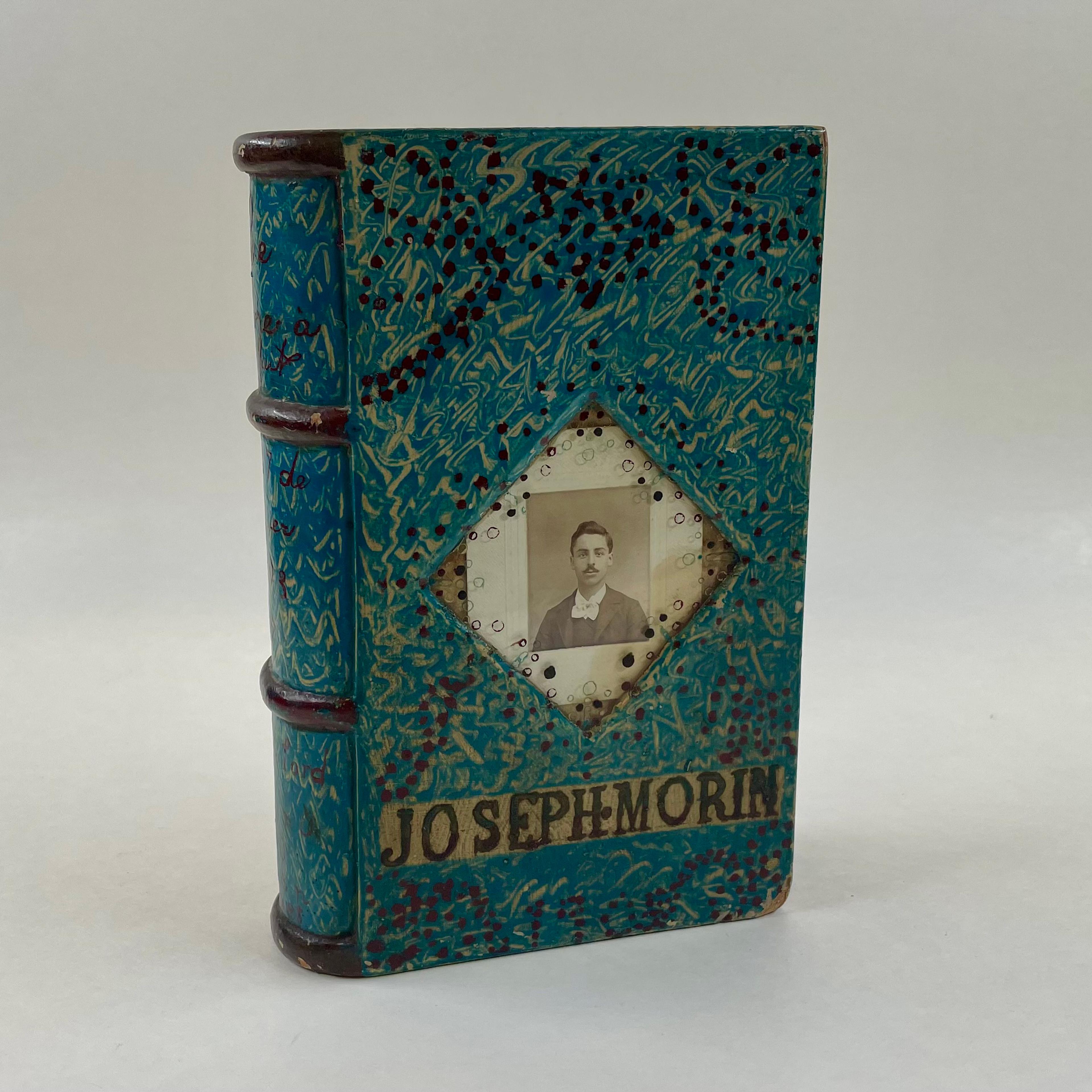I will never forget the summer day I was greeted by Bruce Heckman’s smiling face as I disembarked from the Metro-North in Ossining, NY and was whisked off to his home to meet his wife and co-collector, Lynn. Throughout the day, the couple spoiled me with a show-and-tell of book objects that lasted into the early evening. At some point my eyes crossed, and I could absorb no more, despite the fact that they could have easily continued. Lynn and Bruce had guided me through their home in an organized fashion, opening glass-fronted cabinets, one after the other. Stopping at a cabinet, Lynn removed each wondrous object, each an artful imitation of a book. She shifted each item in her hands and explained where they found it, what it was made for, and what made it exceptional—a secret compartment, a rare use of materials, its provenance, and so on. I could hardly take in what I was seeing—a startlingly rare, historically significant, and beautiful collection of hundreds of antiquarian handmade objects of various formats, materials, and purposes, all made in emulation of books. Until that moment, I never imagined that such objects existed. Despite the fact that I had collected book-shaped objects for decades, our collections barely overlapped, and the quality and age of the Heckmans’ collection was remarkable. It is unimaginable that such a collection could be made today. That day, July 26, 2014, a collaborative friendship was launched that lasted a decade and would have gone on much longer if not for the passing of Bruce, in 2021, and Lynn, in 2024.
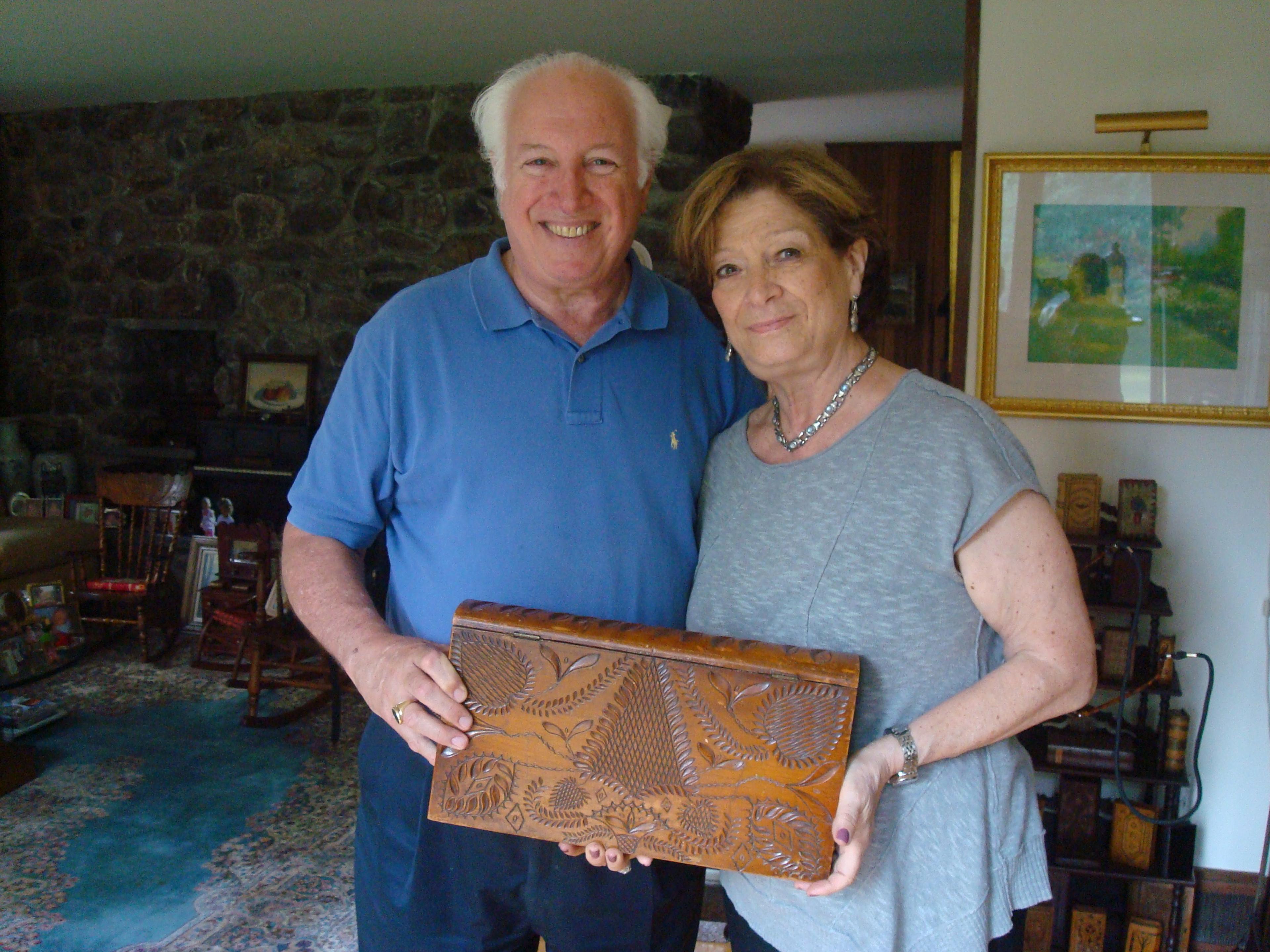
Dr. Bruce and Dr. Lynn Heckman, at home amongst their collection, holding a large 19th-century book box, now in the Watson Library collection, July 2014
Lynn and Bruce Heckman were physicians who met as medical students in the late 1960s. While both were deeply committed to public health, they also had a lifelong interest in books, antiques, and collecting. The couple began collecting iconic book objects together in the late 1980s, eventually acquiring over a thousand objects, purchased during regular visits to antique shows in New England, New York, and abroad, and eventually online. They collected many types of professionally-made and folk-art objects dating from the eighteenth to twentieth centuries, primarily European and American, including jewelry, all types of precious boxes, love tokens, commemorative objects, and souvenir ware.
As with many collectors, the Heckmans were inspired by the joy of the search and felt that collecting enriched their lives. They lived surrounded by their treasures, which they referred to as “the children who never leave home.” During our long friendship, the Heckmans and I collaborated frequently. Our earliest collaborations were posts that Bruce and I wrote for my blog, About Blooks. (“Blooks,” a contraction of book and look, is my name for objects that look like books but aren’t.) Later, in 2016, the Heckmans spoke about their collection at a colloquium planned in conjunction with my exhibition Blooks: The Art of Books That Aren’t, at the Grolier Club. (Their presentation can be watched through this link.)
Sadly, when Bruce passed away in 2021, it soon became necessary for Lynn to move and find a new home for her beloved book objects. In 2023, Lynn offered the collection in full, or in part, as a gift to The Met and a selection of 93 objects was chosen. Last spring, the Library featured many of these objects in the exhibition, Emulating Books: Book Objects from the Lynn and Bruce Heckman Gift, on display from April 18 to July 16, 2024.
Why the Library would collect book objects is a question some may have (see this previous post on the subject). Our collection is mainly comprised of scholarly books reflecting the Museum’s encyclopedic collecting interests. While these resources are the core of our collection, Watson has increasingly collected rare, specialized books for their beauty, artistic merit, and cultural relevance. Examples of these include eighteenth-century fine bookbindings, commercial trade catalogs, nineteenth-century publishers’ bindings, contemporary artists’ books, and decorated papers. The Heckman gift objects echo and amplify the Watson’s collections in ways that are compatible with the history and art of the book, and the Museum’s collection writ large, which includes antique book objects such as Bennington book flasks, Bible Regals, or book harmoniums, and Japanese lacquer boxes.
My research indicates that both professional and untrained artists have been making book objects for a millennium, yet serious study of book objects in relation to academic subjects such as book history, literature, art history, and material culture, remains in its infancy. This may be because few, if any, collections are available for public study. The Heckman collection is a start, and I believe that it has already begun to stimulate academic interest in the subject, as the objects illustrate the ritual and social purposes books have, aside from reading, and the power and impact of iconic book formats. While the collection can assist academic researchers, it may also offer inspiration to artists, who will find the beauty and physical structures of the objects applicable to their work.
Below are a few of those omitted from the exhibition Emulating Books, due to various space and preservation concerns.
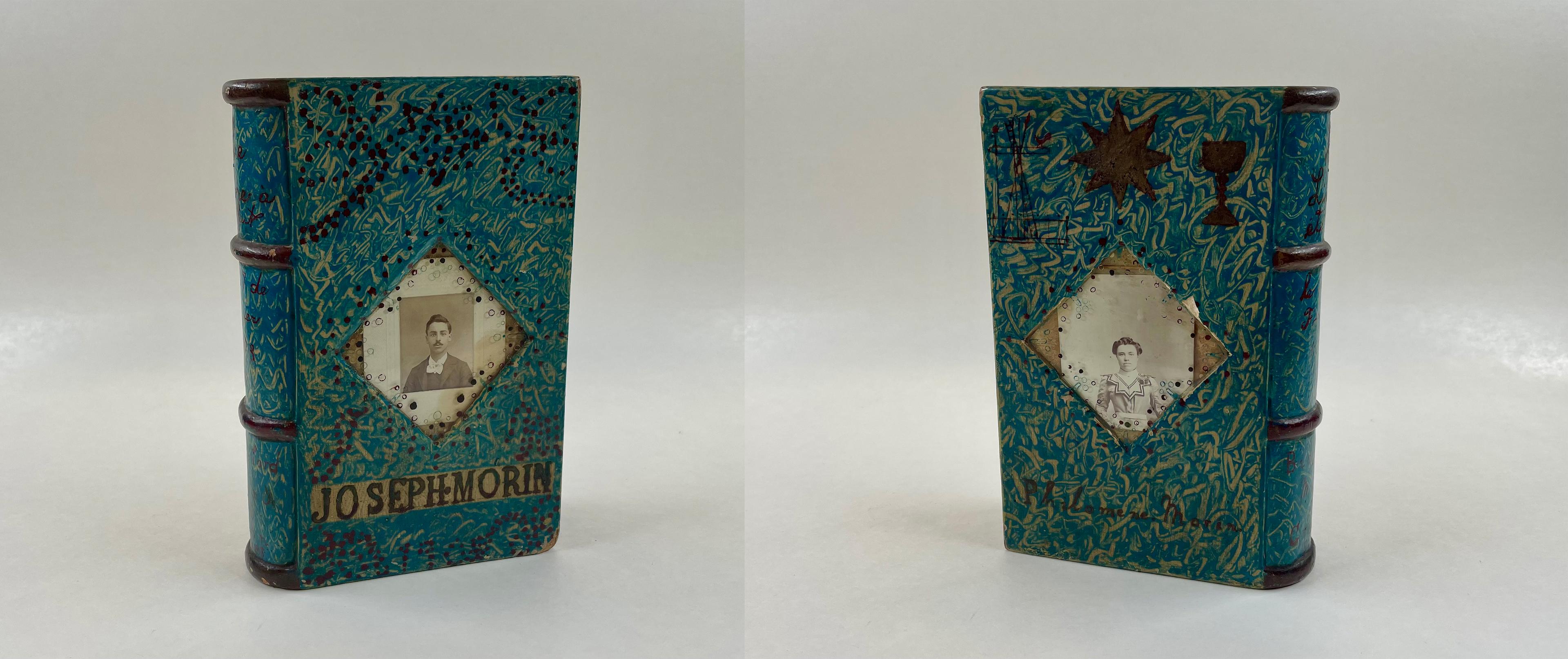
Joseph Morin. Box in book form. American (Biddeford, Maine), 1903. Painted wood (pine), glass, photographs (20.1 x 13.0 x 5.0 cm.) Gift of Dr. Lynn and Dr. Bruce Heckman, 2023
This fine box is known as a spruce gum box, a genre of boxes commonly made by North American lumbermen, as love tokens, during the late nineteenth and early twentieth centuries. It is carved from a solid piece of wood, with sliding lids at both ends. As spruce gum boxes are generally small and unpainted, the large size and aesthetic details of this box indicate that it was made or completed at home and possibly used to house a bible, photographs, or documents. The format and decoration of the book resemble a decorated leather album, as suggested by the photographs of Joseph and Philoméne Morin inset into the covers. Other decorations include motifs depicting the Arma Christi, an eight-pointed star and a chalice; the spine is painted with the inscription Le Livre a ete fait/le 27 de Fevier/a/Biddeford/Maine/40/Green/Street.
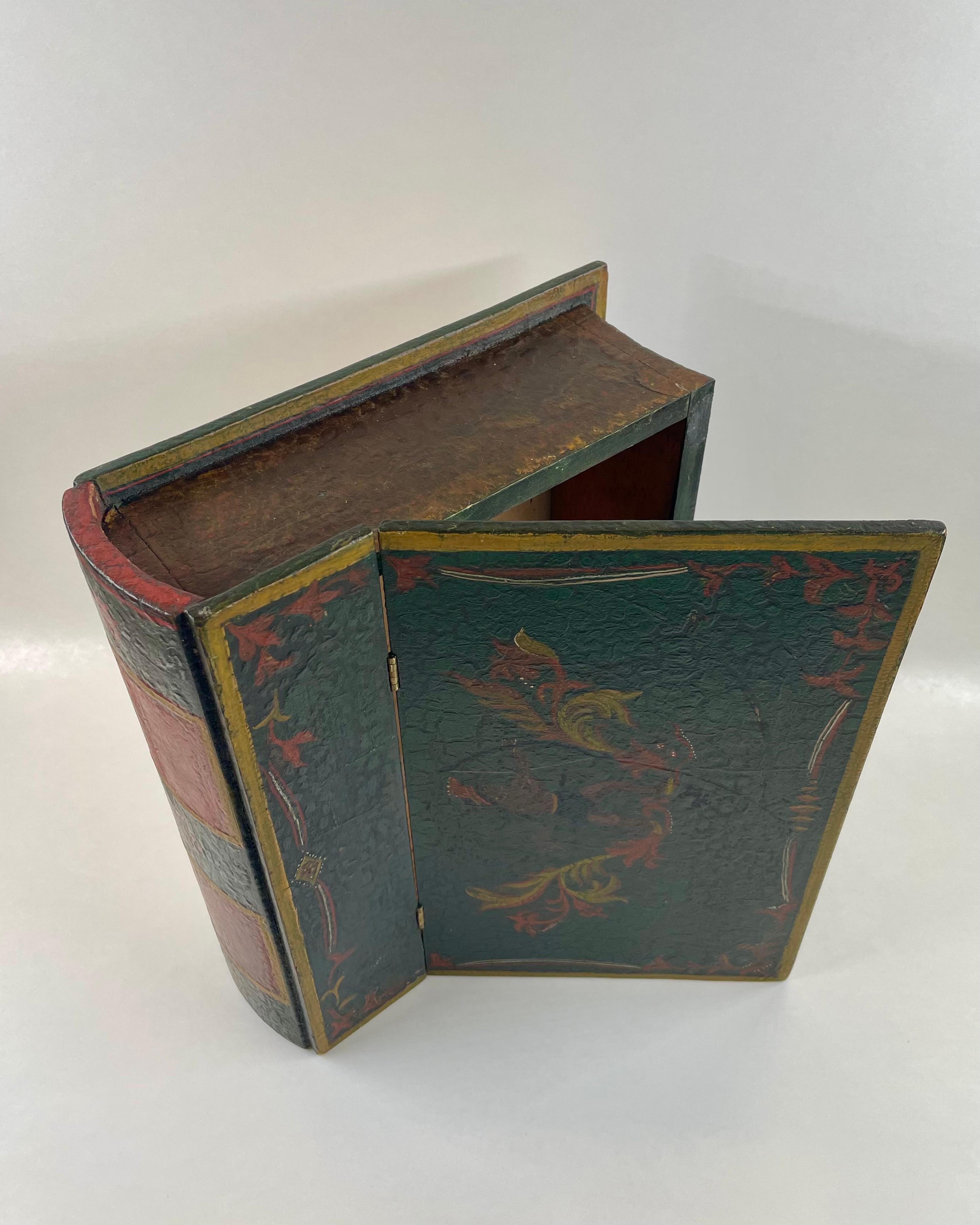
Maker unknown. Painted table box in the form of a book. American, 19th century. Polychrome wood, metal, wallpaper (12 3/8 x 10 5/8 x 3 7/8 in.) Gift of Dr. Lynn and Dr. Bruce Heckman, 2023
This large box was made to sit flat on a table or desk. Its use is unknown. It is painted to appear like a fine bookbinding. The front cover features a border with botanical flourishes and a central design depicting two leafy sprays on either side of the full figure of a Native American man aiming a bow and arrow. The attentive artist painted the box with many elements common to the books of the period, including gold-lined cover borders, five panels on the spine with two “title” labels, decorated edges resembling marbling or stippling, and red and white end bands. The underside of the box is lined with worn, floral-patterned wallpaper, and the interior is undecorated.
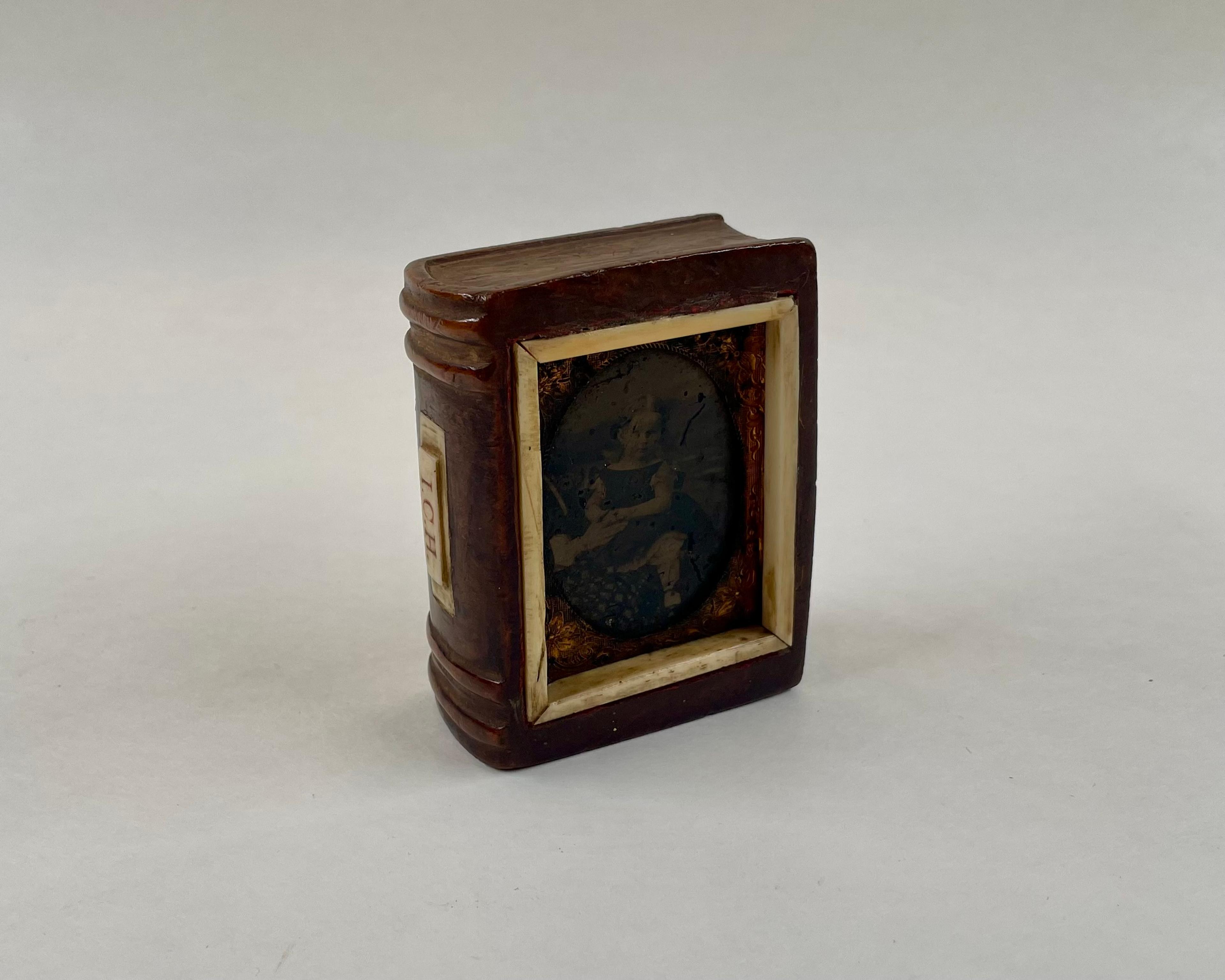
Maker unknown. Memento in book form, with photograph of a child and initials I.C.H. [English or American], 19th century. Wood, bone, brass, colored mastic, tintype photograph (7.8 X 6.0 X 3.0 cm.) Gift of Dr. Lynn and Dr. Bruce Heckman, 2023
Many book objects are made as love tokens or commemorative objects that embody the love and experiences shared between the maker and recipient. Keepsake book sculptures of stone, clay, metal, and wood were commonly made in the nineteenth century, to commemorate marriages, births, separations, death, and war. The forms of books they emulated vary. Some look like the pretty gift book annuals of the period, and others imitate serious books, such as bibles, historical treatises, and memorial books. This object, made of prized burl wood, is serious in nature, a secular icon. Recessed into the front cover, and surrounded by a bone border, is the oval-framed tintype portrait of a child sitting on her mother’s lap. The back cover is decorated with inlaid bone dots, diamonds, and an eight-pointed star. In the center of the rounded spine, bordered by two double raised bands, is a bone plaque engraved with the red wax-filled initials I. C. H.
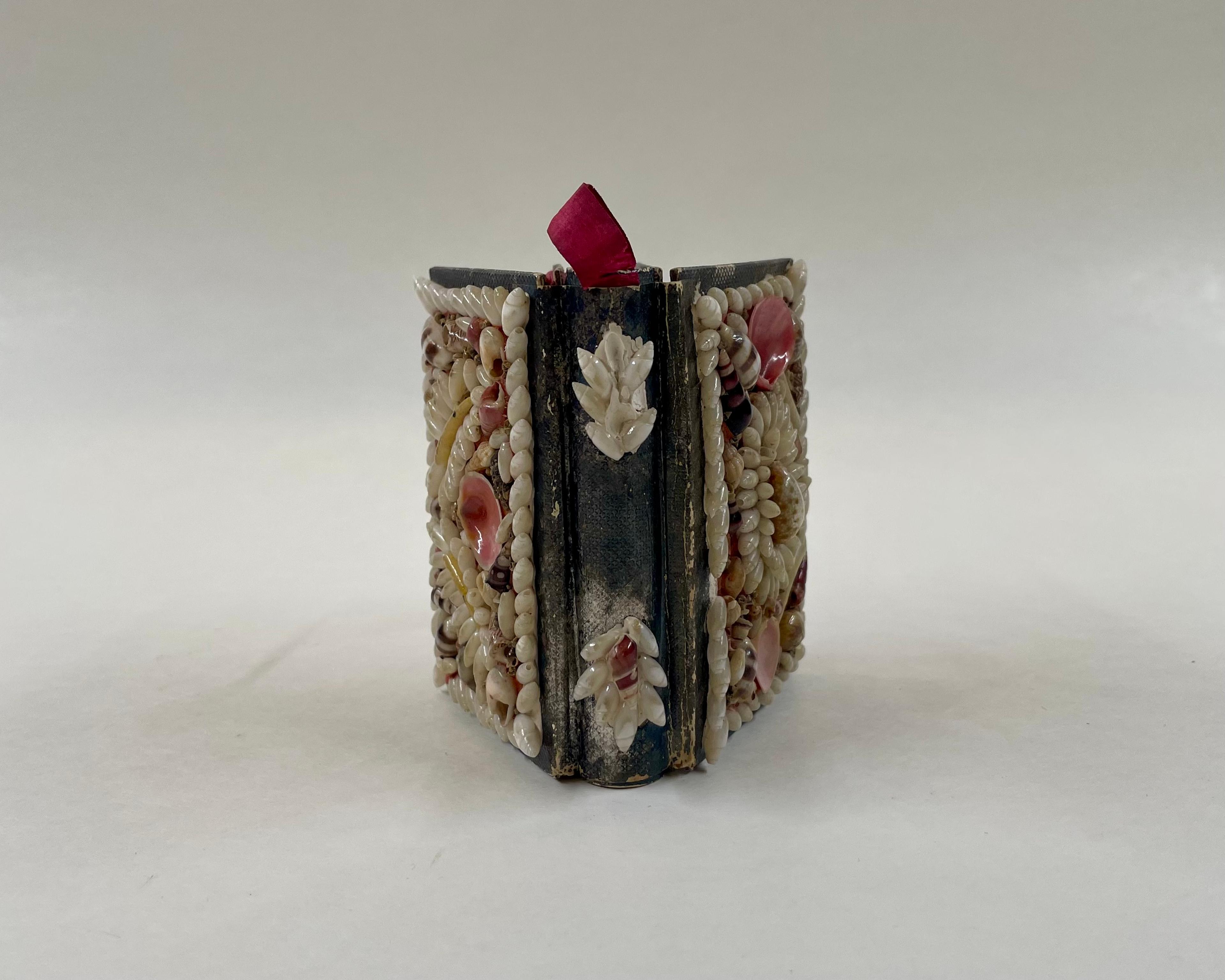
Perry’s Bazaar. Shell flower and shellwork Manufactory, Maker unknown. Shellwork sewing box in book form. English (Ramsgate), 19th century. Paper, fabric, seashells, (8.0 x 5.5 x 4.0 cm.) Gift of Lynn and Bruce Heckman, 2023
Shellwork boxes of varied formats were popular souvenirs sold in ports and seaside resorts in the nineteenth century. Many were sailors’ valentines, fitted with sentimental lithographs of parting lovers and mottoes like “forget me not.” Types of boxes included patch boxes, jewel cases, and needlework boxes, such as this one made by Perry’s Bazaar, which the label tells us was located on the corner of Royal Kent Terrace, “facing the sands” of Ramsgate. This sewing box has several functions. The velvet covered text block, or body of the book, is a pincushion, the wool pages bound inside at the front are for needles, and an expanding storage compartment at the back was for bits and pieces required for sewing or mending. The exterior of the box is fully decorated with shells. Inside the front cover is a lovely, printed decorated paper and store label.
The Heckman collection at the Watson Library includes thirty-seven miniature book objects in the form of charms, watch fobs, lockets, and boxes for postage stamps, medicinal items, and matches. Fifteen of those not shown in Emulating Books are illustrated here, and include personal objects made of precious base metals and stones.
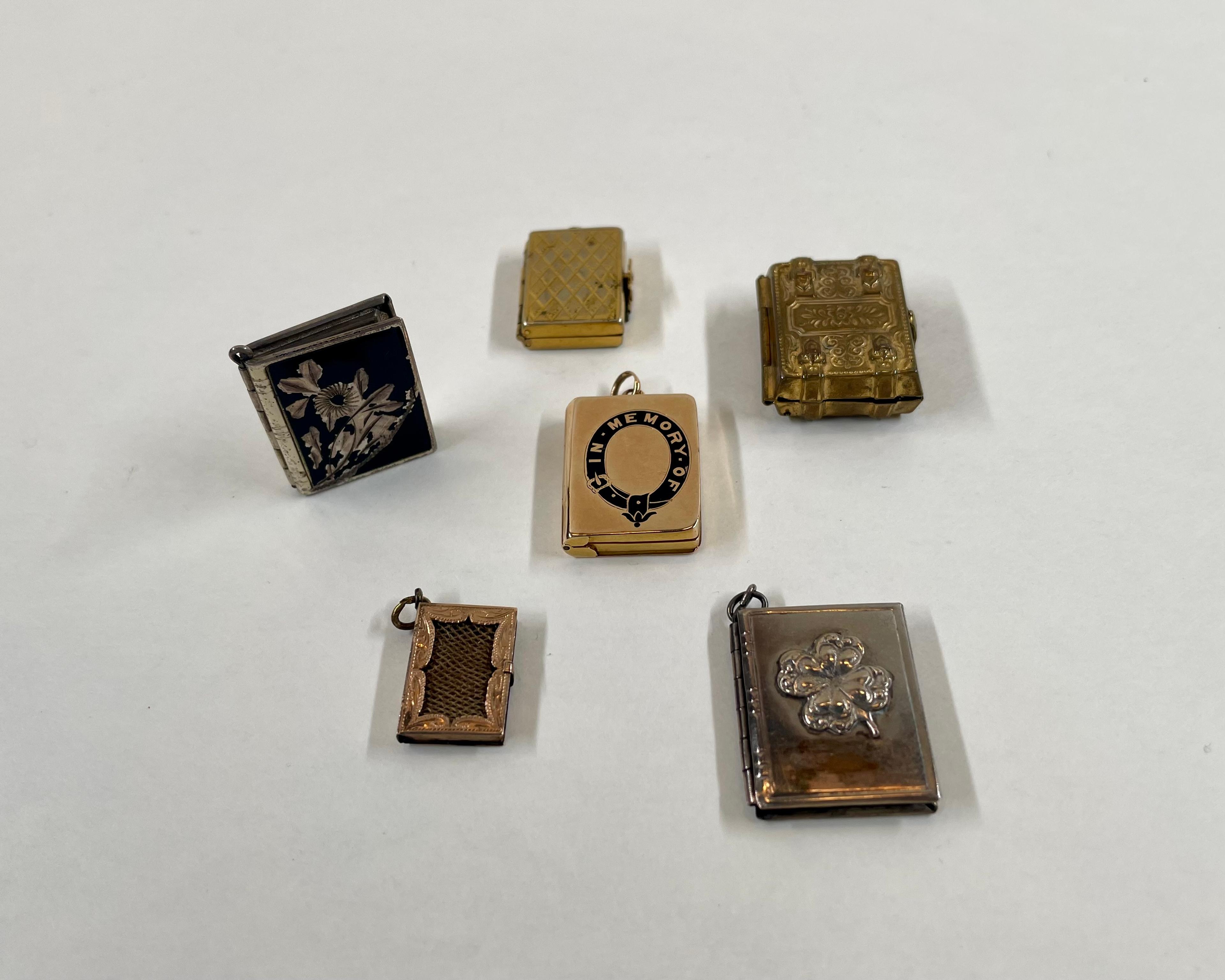
Six miniature charms and lockets

Six miniature boxes, including match, stamp, and medicinal boxes
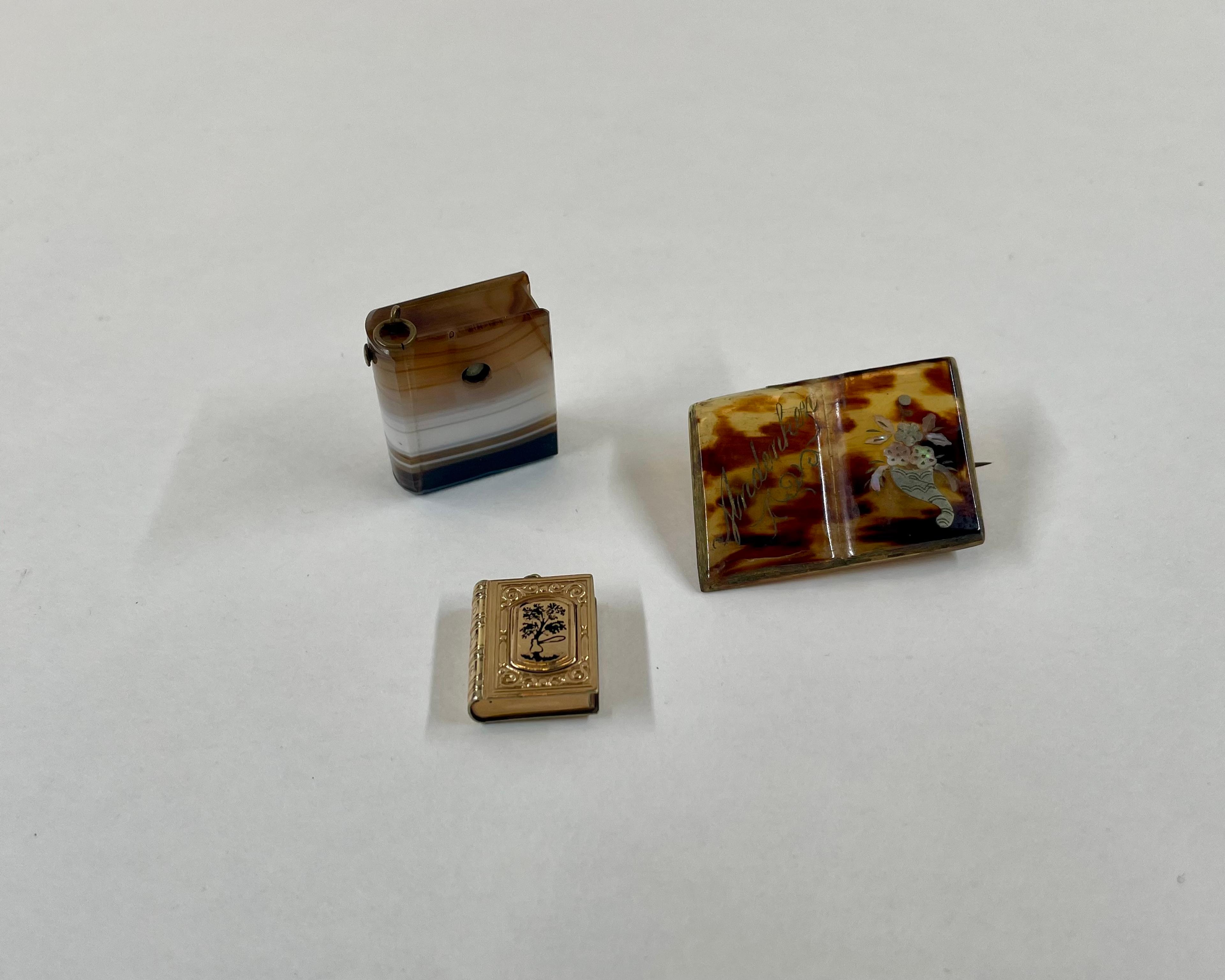
Three miniature boxes, including a brooch, Stanhope (viewer), and charm
I hope that this introduction to book objects stimulates interest in the subject and inspires readers to visit Watson to view the Heckman objects in person.
